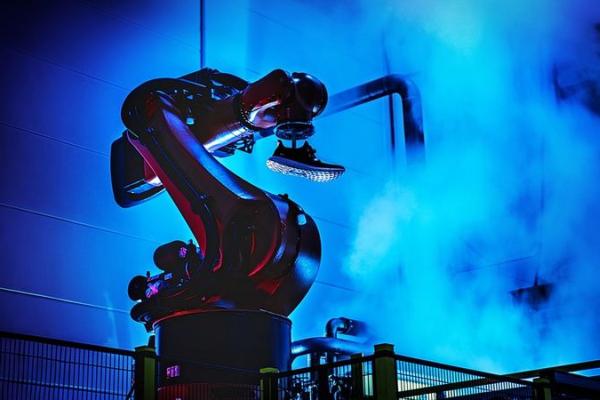Published on the 09/08/2017 | Written by Jonathan Cotton

Artificial Intelligence and the production floor revolution…
Elon Musk famously warned that artificial intelligence could become humanity’s “biggest existential threat”, and while he’s probably right, we’re still sick of hearing it.
Because underneath that sense of dread (that may or may not be justified) we’re getting excited by the breathtaking capabilities which AI seems to promise. One prediction: AI might just boost labour productivity by up to 40 percent in 2035. Another, more interesting one: Fully working AI surgeons, 2053.
And the transition has already begun. Case in point, manufacturing, where real-time artificial intelligence is allowing manufacturers to run their plants with smaller and smaller management teams, and with increasing production and efficiency.
Let’s call it Industry 4.0.
One company ahead of the curve is Siemens, proud masters of the Siemens AG smart factory, Germany. That facility boasts 1000 connected manufacturing units and 1,200 employees, with 75 percent of operations automated and production quality sitting on a very reasonable 99.99885 percent. The factory manufactures about 12 million products per year.
While semi-conscious back-end systems and row upon row of unfailing mechanical arms does sound brilliant, actually bringing together data from supply chains, quality control, production teams, and distribution into an intelligent, functional network way can be a complicated task.
“This is keeping a lot of leaders awake at night,” said Debra Bordignon, Dimension Data CTO and author of an eBook released today, The Exponential Digital Social World. “They know they’re probably doing a few things right, but how is it all supposed to come together?”
While the path toward the AI-empowered smart factory of the future is hardly clear, Bordignon said that, nevertheless, the time to prepare is now.
Just how that plays out however is dependent on a number of factors.
“You need to know truly what your organisational purpose in this changing world is,” said Bordignon.
“What are the core drivers of your business? How relevant is AI to your stakeholder experience? How relevant is it to your ability to engage and differentiate and stay in relationships with your customers and business partners? How important is it to have intelligent business processes and connected business models with their eco system?”
Knowing that will help you decide what role AI (and other advancing technology in general) will play across your business, she said.
“It may sound vague, but you need to be able to contextualise what you actually need from AI.”
“Then you can map an innovation agenda and experiment with technologies that are available to you and within your risk appetite. More than likely you don’t want to be investing in things that won’t have a payoff for ten years. You’ll want to have a mixture of things that might be game changing but also some low hanging fruit.”
And such planning needs to take place at a governmental level too, not just in preparing a legislative framework that encourages innovation and adoption of AI, but in preparing tomorrow’s workforce for that labour market transition.
Because by all accounts, we’re moving with increasing speed from blue collar, labour-intensive manufacturing to a new, highly automated, white-collar production floor.
Let’s call it ‘New Collar’.
That’s an issue which needs needs to be addressed, said Joanna Batstone, VP of IBM Research Australia. It’s also a conversation too often focused on the wrong things – such as which occupations will stay or go. “In this emerging ‘New Collar’ workforce skills matter more than degrees,” she noted, speaking of a new report prepared by The Foundation for Young Australians entitled The New Work Smarts.
“New Collar jobs don’t always need a traditional four year degree, enabling us to accelerate young Australians into high demand jobs through online training and on-the-job learning.”
“These areas are also fighting for talent with a looming skills shortage, and getting more people into these careers is critical to Australia’s digital future.”
The New Work Smarts report highlights that as technology reduces the need for workers to complete routine, manual tasks, the opportunity rises for skilled workers to spend more time focusing on people, solving more strategic problems and thinking creatively.
Bordignon concurs.
“There are going to be a lot of opportunities from AI freeing people to do higher order stuff”, she said.
“There’s no better example than how it can play out than in call centres, where you can use AI to provide people with the information they need, to more efficiently expedite a business process or enquiry and free up the call centre worker to deal with the more human side of the interaction.”
So don’t despair, at least not yet. “As our relationships move into the digital world, the interaction elements are amplified in importance. That’s going to be utterly, profoundly important in the digital world.”



























